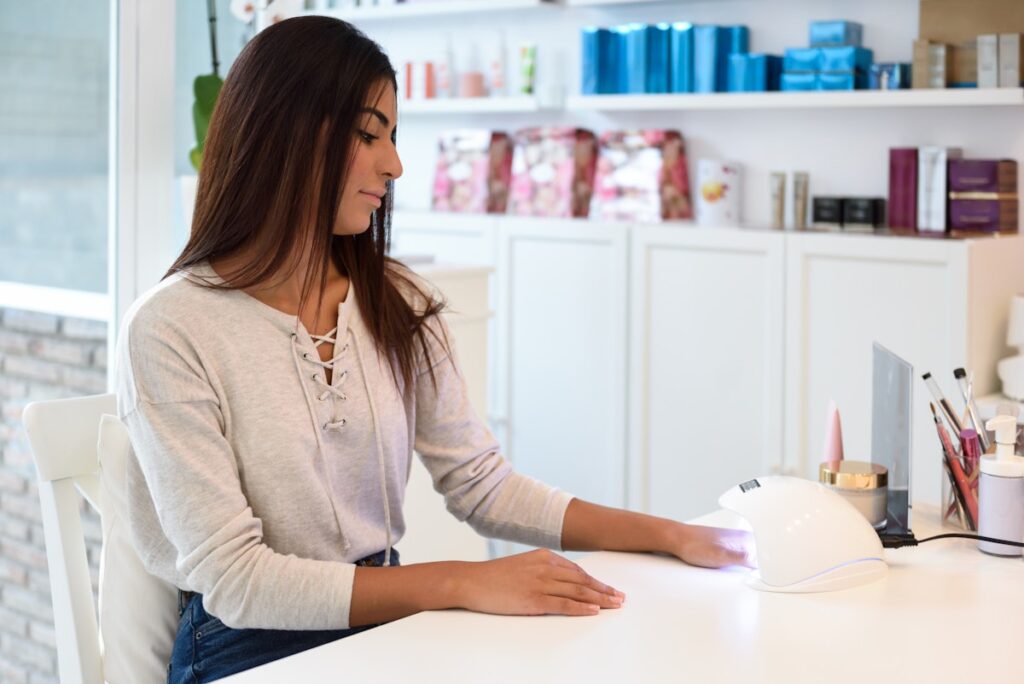Introduction
In recent years, the popularity of gel manicures has surged, with many opting for the long-lasting finish these treatments offer. However, alongside this trend comes a growing concern regarding the safety of UV nail lamps used in the curing process. With numerous discussions circulating about potential health risks, particularly the fear that UV nail lamps might cause cancer, it’s crucial to discern fact from fiction. In this article, we will explore the science behind UV nail lamps, address common myths, and provide tips for safer gel manicures.
Understanding UV Nail Lamps
UV nail lamps, often found in salons and at-home manicure kits, use ultraviolet light to cure gel polish. This process involves a chemical reaction in the gel that forms a strong, durable finish. However, the technology has raised questions about exposure to UV radiation and its potential health implications.
The Science Behind UV Light
UV light is divided into three categories: UVA, UVB, and UVC. UVA rays are the primary type emitted by UV nail lamps. Unlike UVB rays, which are responsible for sunburn and skin cancer, UVA rays penetrate deeper into the skin and are associated with aging and tanning.
It’s essential to understand that the exposure level from UV nail lamps is considerably lower than that from natural sunlight. While prolonged exposure to UV rays can contribute to skin damage, the amount of exposure during a typical gel manicure is minimal—usually lasting only 30 seconds to 2 minutes per hand.
Common Myths About UV Nail Lamps
Myth 1: UV Nail Lamps Cause Skin Cancer
This myth is perhaps the most prevalent concern among those considering gel manicures. While it’s true that UV radiation is a known risk factor for skin cancer, the minimal exposure from nail lamps is not on par with the levels of UV radiation one would receive from the sun or tanning beds, especially when protective measures are taken.
Myth 2: Everyone is at Risk
Not everyone is equally vulnerable to UV exposure. Factors such as skin type, previous sun exposure history, and overall health play a significant role in determining one’s risk level. Many users do not experience any adverse effects from occasional use of UV nail lamps.
Myth 3: UV Nail Lamps are the Same as Sunlight
Another misconception is that UV nail lamps emit the same intensity of UV radiation as sunlight. In reality, the UV output of nail lamps is concentrated and controlled for short durations. Therefore, the risks associated with UV nail lamps are substantially lower compared to prolonged sun exposure.
Research and Expert Opinions
According to experts in dermatology and oncology, the risks associated with UV nail lamps are relatively low, particularly when compared to other sources of UV radiation. A study published in the Journal of the American Medical Association found that UV nail lamps do emit UVA radiation but concluded that the exposure is not significant enough to warrant concern for the average user.
Safety Tips for Gel Manicures
1. Use Sunscreen or Protective Gloves
To minimize UV exposure, apply a broad-spectrum sunscreen to your hands before your manicure. Additionally, using UV-protective gloves can provide an extra layer of safety, allowing you to enjoy gel manicures without worrying about radiation exposure.
2. Limit Frequency of Use
If you are concerned about UV exposure, consider limiting the frequency of your gel manicures. Opt for regular nail polish occasionally, and when you do choose gel, ensure to give your skin adequate breaks between treatments.
3. Choose Quality Products
Not all UV nail lamps are created equal. Investing in reputable brands and ensuring proper equipment is crucial for minimizing risks. Poorly designed lamps may emit higher UV radiation than those that meet safety standards.
Conclusion
In conclusion, the fears surrounding UV nail lamps often stem from misinformation and misconceptions. While it’s valid to consider the implications of UV exposure, using protective measures and understanding the science behind UV light can allow you to enjoy gel manicures safely. As with any beauty treatment, moderation and informed choices are key to maintaining both nail health and overall well-being.

